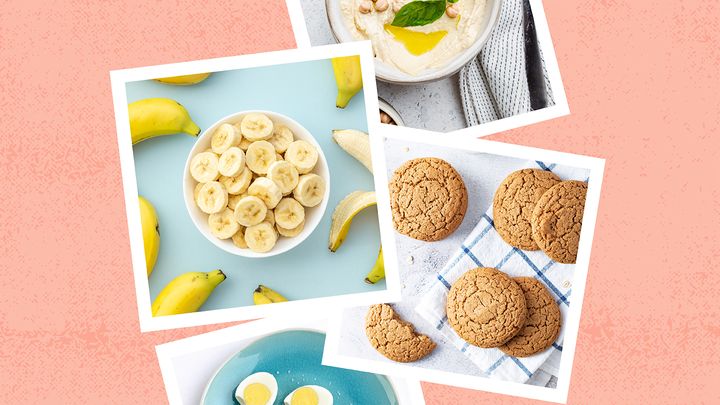- Empty cart.
- Continue Shopping
How to Create a Healthy Snacking Routine

Snacking is a common part of our daily lives, and when done right, it can be a valuable component of a healthy diet. However, all too often, snacking becomes an opportunity for indulgence in sugary, high-calorie treats. We will explore how to create a healthy snacking routine that supports your nutritional goals and overall well-being. With some mindful choices and planning, you can turn snacking into a positive habit that boosts your energy and satisfies your taste buds.
Understand the Importance of Snacking
Before diving into the specifics of creating a healthy snacking routine, it’s important to understand why snacking matters. Snacks can help you maintain steady energy levels throughout the day, prevent overeating during meals, and provide essential nutrients. However, the key is to choose snacks that are nutritious and balanced, rather than those that are loaded with empty calories.
Choose Nutrient-Dense Foods
The foundation of a healthy snacking routine is selecting nutrient-dense foods. These are foods that provide a high concentration of vitamins, minerals, and other beneficial compounds relative to their calorie content. Some excellent examples include:
- Fresh fruits and vegetables
- Nuts and seeds
- Greek yogurt
- Whole-grain crackers or bread
- Lean proteins like turkey or chicken
By choosing nutrient-dense snacks, you can satisfy your hunger and nourish your body at the same time.
Portion Control
One common pitfall in snacking is overindulging. To avoid this, practice portion control. Pre-portion your snacks into small containers or bags to prevent mindless eating. Be mindful of serving sizes, and avoid eating directly from the package, as it can be challenging to gauge how much you’ve consumed.
Plan Your Snacks
Planning is a crucial element of creating a healthy snacking routine. Keep a variety of healthy snacks readily available, whether at home or work. Stock your kitchen with fruits, vegetables, and other wholesome options. When you plan your snacks, you are less likely to reach for unhealthy alternatives out of convenience or hunger.
Timing Matters
The timing of your snacks can impact your energy levels and overall nutrition. Aim to have snacks between meals to help maintain steady blood sugar levels. Ideally, you should have a snack when you feel moderately hungry, not ravenously so. A well-timed snack can also curb your appetite and prevent overeating during your next meal.
Listen to Your Body
Pay attention to your body’s hunger and fullness cues. Snacking when you’re genuinely hungry can be beneficial, but eating out of boredom, stress, or habit can lead to unnecessary calorie intake. Practice mindful eating by savoring your snacks and eating them without distractions.
Include Protein and Fiber
Protein and fiber are two essential components of a satisfying and healthy snack. Protein-rich snacks, such as a handful of almonds or a piece of string cheese, can help keep you full and provide necessary amino acids. Fiber-rich snacks, like fresh fruit or whole-grain crackers, promote digestive health and slow down the absorption of sugar, preventing energy spikes and crashes.
Hydration Matters
Sometimes, what we perceive as hunger is actually thirst. Before reaching for a snack, drink a glass of water and wait a few minutes to see if your hunger subsides. Staying hydrated is essential for overall well-being and can help regulate your appetite.
Avoid Processed and Sugary Snacks
One of the primary culprits of unhealthy snacking is processed and sugary snacks. Foods like chips, candy bars, and sugary drinks can provide a quick energy boost but are often followed by a crash. These snacks are also typically low in nutrients and high in empty calories. Try to limit your consumption of these items and save them for occasional treats.
Experiment with Healthy Recipes
Creating your healthy snacks can be a fun and rewarding way to ensure you’re eating nutritious foods. Experiment with recipes that incorporate whole foods, such as smoothie bowls, homemade granola bars, or veggie-based dips. By making snacks at home, you have full control over the ingredients and can tailor them to your taste preferences.
Keep a Snack Journal
Maintaining a snack journal can help you become more aware of your snacking habits. Write down what you eat, when you eat it, and how you feel before and after. This can help you identify any patterns or triggers that lead to unhealthy snacking and make necessary adjustments.
In Conclusion, Creating a healthy snacking routine is an essential aspect of maintaining a balanced diet and supporting your overall well-being. By choosing nutrient-dense foods, practicing portion control, and paying attention to your body’s cues, you can transform snacking into a positive and health-promoting habit. Remember that small, mindful changes can lead to significant improvements in your diet and energy levels. So, start making healthier snack choices today and enjoy the benefits of sustained energy and improved nutrition.








